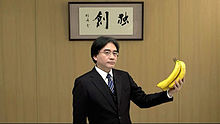I happen to like modern and conceptual art, when it’s good. But I’ve never been at a busy modern art museum and not heard the clichéd comment “my kid could paint that”. (My answer usually being: I’d like to see that.)
The medium of software is, similarly, one users tend to criticize from a place of “knowing better”. This tendency extends even to those who make software. “If we just…”
Everyone wants your decision making rights, even if they don’t know it. In the next few essays I’ll talk about various typical stakeholders and how to interact with them in a productive and empowering way, while also protecting your prerogatives and role as decision maker.
Before we get into specific relationships, I wanted to call out some commonalities that hopefully illustrate what I mean, and help new PM or interested outsiders understand how this kind of leadership can be done.
One thing that separates a great PM from an okay one is that they understand that their job is not just setting the agenda but setting the tone, and team narrative. Is the team a successful release machine, delighting users and hitting KPIs? Or is it an abject failure that builds buggy shitware and is about to be re-orged into oblivion? Between these poles, there is a lot of complicated reality. A great PM will shape the team’s reality. Not though lies, withholding and manipulation, but through emphasis, tone and self-certainty. In discussions and meetings be real, but also determined: cynically optimistic.
The most obvious way to be the team’s leader is to be the person who decides, or decides who the decider is. If there are disagreements between functions or teammates, or you don’t need to make the call, always state clearly who has say. Do the same when out-of-office, or unintentionally neglecting a situation. Don’t let it hang: delegate. Weirdly, the best way to protect your prerogative is by delegating it frequently and explicitly. If you don’t make the decision, decide who does.
I personally value decisiveness and determination very highly, and although they can shade too easily into arrogance and stubbornness, such is the case with any virtue taken to extreme. One way to avoid this extreme, but maintain decisiveness, is to embrace negotiated decisiveness. Let the negotiations run free, and let discussions happen. Then be the one that ends them. Then, once they are ended, record that decision and maintain your determination to see it carried out, until new information is available or risks manifest. Again, this kind of leadership is not, at core, about seeing your meme win (“getting your way”), but about having say over which memes are allowed, and how they win (“being the decider”).
Finally, remember, when making decisions and considering the sides of an argument or political situation, that surety doesn’t equal correctness. The people who are the most determined are not always the most correct or well intentioned. If you want a career in “authority-less leadership” you have to be able to not give in to bullies and blow hards. Let them blow. Remember they will get mad when they don’t get their way. Remain calm, and practice benevolent determination.

